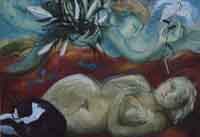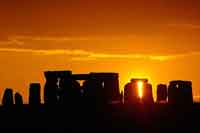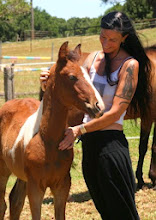 Introduction
Introduction
The idea of community has long had a central place in our social composition, but it was T”nnies (1887) who distinguished between community and society, placing the enduring aspect of social relationships in the context of modernity and the associated degeneration of traditional social structures.(Fernback & Thompson 1995) Over a century later, however, there is still no agreement on what constitutes ‘community’.
This case study is primarily a compare/contrast report of a single online community of interest against selected criteria from the plethora of definitions and information relating to virtual community investigation. The methodology is modelled after a combination of approaches including Antonijevic 2005, Reid 1991, Watson 1997, Ridings et al 2002, Rheingold 2000, Kim 2002 and Suler 1996. The unique nature of this case study encourages a deeper look into the conceptualization and psychology of metaphorical spaces, both online and off line, and the results of interactions that extend not only through these metaphorical spaces but also into face-to-face participation as well. With the concept of metaphorical spaces in mind, the study is based on a more traditional definition of ‘community’.
About the Covenant of Wildwood Gate:
The Wildwood Gate is an online forum, a meeting place for witches, shamans, druids and those of Celtic-related spiritualities and indigenous pagan traditions to share knowledge, insights and experiences in their common interest. Running almost continuously since 2001, it is not an open community. Membership is invitation only.
Prospective members (when the links are activated and they are directed to the forum) are referred to the moderator/author’s website and instructed to read some of her books, (Witchcraft Theory & Practice, When I see the Wild God), view the frequently asked questions and, if still interested, introduce themselves on the 'entry' part of the forum. This is the only area they can read or access at this time. They are warned to be ‘ready for an inquisition’.
Currently, all links to the forum have been suspended and no new memberships are under consideration. As a long-time friend of the author, I have had access and participated in this forum since the inception. Memberships fluctuate between 30 and 50 participants and the ‘intention statement’ follows:
“What we have is a place that we each and every one have respect for, based on an understanding. Having known each other for a while now, we are deep and friendly with one another. The connections run far in all directions, witch and fey alike. Some are Initiates, some not. What we have in common, regardless, is reverence.”
 Metaphorical Spaces: Why do we need them?
Metaphorical Spaces: Why do we need them?
The traditional definition of community includes location, describing it as a group of people in the same locality, the locality itself, or a group with common interests. (American Heritage Dectionary 1976) If we are looking for the location in online communities, where is it to be found?
Most scholarly investigations describe online experiences as taking place ‘somewhere’.
(Online) users often feel - consciously or subconsciously - that they are entering a "place" or "space" that is filled with a wide array of meanings and purposes. (Suler, 1996)
Stein Gotved further delineates the spaces of the internet into three distinct categories: the ‘interface space’, the ‘social space’ and the ‘metaphorical space’. The conceptual understanding of Gotved’s spatial dimensions and Suler’s sense of ‘place’ supports a traditional definition of community. The specific social and interactive exchanges online, both synchronous and asynchronous, and the potential to form community within that space are seen by these authors as natural.
The metaphorical space is purely epistemological, based on reconstructed reality and geography, and evokes the sense of a place. The typology holds the key to understanding many of the differences within online social life. (Gotved, 2002)
Gotved describes the social links to online communities in cyberspace as a relatively new model for human interactions. “Belonging goes to a certain place shared by certain people, and on the Internet, various locations are imagined through their address as a “there” in the vast online realm.” (Gotved, 2002)
Members of the Covenant of Wildwood Gate refer to their forum as a place, a distinct ‘somewhere’. In the mission statement above, new members are charged with holding reverence for this space.
From posts in 2005-2006 we find references to place and space:
Sha...: This place is Sacred, and we will not have it compromised.
Ci...: I am always here for anyone who wishes help …all you have to do is message me.
R...:W: It’s good to see you back here. Where have you been?
El...: I hope you have found your way easily through the many corridors of the wildwood gate…
Travelling to these non-corporeal ‘somewhere’s’ is nothing new in human evolution or experience. The ability to journey abstractly to a hypothetical space appears innate, enhanced in certain individuals throughout history, particularly shamans. (Campbell 1976)
One example of such an abstract journey is found in the Inuit ritual for communicating with Sedna, their life/death goddess of the Artic Seas. When enraged by a tribes’ misconduct, Sedna withholds the seals and fish from hunters and the people starve. The shaman (a man or woman) then journeys down into the bottom of the icy oceans. There they placate Sedna by combing out her tangled hair and agreeing to ‘make right’ the transgression. When the Shaman returns, the people gather to learn what must be done to honour Sedna and stay in her good graces. (Falconer, 2005 p. 69) These journeys demonstrate a natural and active participation in non-corporeal spaces. (Talbot 1993)
Along with shamanistic rituals, all cultures experience the existence of communities lacking physicality. Conceptual spaces such as Tartarus, the Dream-Time, Hades, Heaven and Nirvana testify to the ‘other worlds’ perpetuated through oral and literary traditions. (Green & Fletcher, 1997) The human propensity to journey to these non-corporeal spaces, and the fact that they exist at all, helps to understand better the nature of community online because it too is an abstract, non-corporeal space where people gather. Given the nature of Wildwood Gate members, such abstract, non-corporeal spaces are familiar territory, invoked off line through meditation, ritual and trance-like states.
Community, Identity and Cyber Space

Not all groups of people meeting online are communities. Chat rooms, for example, that are geared for singles looking to connect with others, or discussion boards concerned only with information exchange may not qualify as an online ‘community’ because they lack a sense of permeance and consistency among members. (Ridings & Gefen 2004) What does constitute a community is still debated among academics in this field and empirical studies have shown conflicting results. (Antonijevic 2005) Simply defining the word ‘community’ is problematic.
Community as a sociological concept—online or off—does not lend itself to any agreed definition. There are over one hundreds attempts to define community advanced by anthropologists alone. (Riding et al 2002) Some working definitions include:
‘Community is a collection of people who have come together for some common purpose, interest or activity, and who are able to get to know each other better over time.’ (Kim 2001)
Amy Jo Kim applies this definition to both online and offline experiences and feels the notion of becoming more familiar with each other over time is crucial. Her main thesis is that online communities are about creating environments for building relationships. (A Conversation with Online Community Architect Amy Jo Kim 2001)
Ridings et al defines virtual communities as ‘groups of people with common interests and practices that communicate regularly and for some duration in an organized way over the Internet through a common location or mechanism.’ (Riding 2002) She stresses that the location of the virtual community is vital because even though it lacks physicality, it establishes the ‘somewhere’ required to commune.
Watson in his study of the Phish.net Fan Club cautions against assigning the label of community prematurely to any online group but feels that authentic online communities form around a common interest therefore boosting the urge to participate. (Watson 1997)
Rheingold’s view, based on his experiences in the WELL and research there, states that members of an online community do ‘everything’ that people do when they are together physically, only it is done with words on a computer screen, non-corporeal and non-temporal. (Rheingold 2002 p 58)
Reid interprets online communities as a postmodern phenomenon, requiring the deconstruction of many of the cultural tools and norms that form the basis of face to face interactions. (Reid 1991) She concludes that we need to reorient our thinking in the areas of linguistics, sociology and history to understand and evaluate these communities.
The results of this case study counter Reid in this urge for reconstruction and returns to the standard dictionary definition of communities as the basis of evaluation. Here communities imply three things: space, commonality and communication. With this broad sense of definition in mind - common interest, locality, regular communication and duration - Wildwood Gate qualifies as a community of interest.

Wildwood Gate members have a strong sense of PLACE.
Wildwood Gate members develop relationships that build over time, some of which are conducted face to face as well as on the forum.
Wildwood Gate members engage in communication based not only on information exchange in the context of shared interests but personal experiences, feelings, fears, hopes, aspirations and views. Over time, members have developed enough trust to express real vulnerability and offer real support.
Some members of the Covenant of Wildwood Gate meet off line as well as in the forum. These experiences are not ‘separate’ but may actually complement each other. Dr. John Suler lists ways and means of integrating virtual reality community with face-face-community for mutual benefit. (Suler, 1996) :
1. Tell online companions about ones offline life.
2. Tell offline companions about ones online life.
3. Meet online people offline
4. Meet offline people online
5. Bring online behaviour offline
6. Bring offline behaviour online
By incorporating the social connections experienced through online spaces with those off line, Wildwood Gate members enhance their feeling of connection leading to more wholeness and authenticity. In this case, the personality can grow and flourish, though it is not always simple.
Text-only communications, equalization of status, and the opportunity for altering or hiding one's identity are all unique monkey wrenches tossed into the online group process. (Suler, 1996)
The questions of Identity: Who's Who?
One of those ‘monkey wrenches’ is the identity one brings with them when they enter online spaces. Much controversy revolves around the issues of identity appropriation, perhaps because a deeper psychological investigation has been lacking. Although sometimes problematic, the expression of diverse ‘sub-personalities’ is natural. (Falconer 2005b)
Everyone has an assorted ‘cast of characters’ in their unconscious and like any actor on stage, these characters have one aim—to be seen! (Greene & Sasportas, 1987 p. 165) Each ‘identity’ has something to offer though these personalities often have conflicting needs.
For example, one sub-personality might form around the archetype of self-sufficiency and pragmatism, projecting out into the world as a hard working, independent and ambitious. An equally valuable but contrasting sub-personality might form around the archetype of artistic expression and philosophical or spiritual enquiry, creating a ‘mystic/pragmatist’ paradox or split. (Falconer 2005b) Because the individual can not easily reconcile the divergent drives, there is a ‘split’ where one sub-personality expresses while the others are repressed.
We exhibit one kind of behaviour at work, another at home, another at social gatherings and yet another on a country walk. Very often we slip in and out of our different identities without very much awareness of doing so. (Greene & Sasportas, 1987 p. 163)
The Covenant of Wildwood gate offers a chance to explore the divergent aspects of members’ personalties with greater consciousness. The members can select what parts of themselves they want to share, perhaps revealing sides of their nature previously repressed, denied or rejected. Wildwood gate allows for deeper work in this area by providing extensive threads on member’s experiences under the title of ‘glamoring’. Again, the development of trust between members allows for this kind of exploration, vulnerability and honesty.
Although many authors are quick to point out the online perpetuation of social conditions though ‘identity appropriation’ such as racism, prostitution and other forms of identity based social oppression, (Nakamura, 2002) that there is an identity at all becomes key. Here the ‘self’ that one takes into online social spaces is no less immune to pathology than it is in any other aspect of life. (Falconer 2005b) These issues attest to the significance of the online community experience—and the need for new social-psychological principles to account for the varied and unusual group dynamics in cyberspace. (Suler, 1996)i''
9 Principles of Community:
Measured against Kim’s nine basic qualities or principles of community, (Suler 1996) Wildwood Gate also qualifies as a community of interest:
1. Define the purpose of the community: The introduction to Wildwood Gate carefully defines the nature of the online community forum, the interests that are covered and whom may or may not be invited to participate. Strict guidelines are followed in the admission of new members. There is nothing ambivalent about these initial steps.
2. Create distinct gathering places: The format, Avatars, User Names and uploaded images all create a mystical, and consistent feeling of metaphorical space.
3. Create member profiles that evolve over time: The member profiles and rankings are distinct and chosen by the members themselves. They can change them over time and often do. The ‘ranking’ system by number of posts has been eliminated.
4. Promote effective leadership: There are three moderators of Wildwood Gate. All are extremely effective leaders, online and off. Two hold sensei (black belt) ranks in various martial arts in which strong leadership is a requirement.
5. Define a clear-yet-flexible code of conduct: The code of conduct is clear. It is not flexible in some areas, for example, plagiarising materials from the site constitute immediate banishing. Other minor lapses in conduct would result in a warning/discussion.
6. Organize and promote cyclic events: Wildwood Gate, as a group, follows ancient Celtic traditions, celebrating the ‘sabbats’ , solstices and equinox events. They gather in physical celebration where possible. However, unlike (Hafner 1997) who states the Well flourished because of time spent face-to-face, in the Wildwood Gate, problems engendered online are usually solved online and problems occurring off line are solved off line.
7. Provide a range of roles that couple power with responsibility: There is much emphasis given to self-responsibility in this community, with shifting roles and tasks that evolve and change organically over time.
8. Facilitate member-created subgroups: This happened spontaneously in the beginning as subgroups moderated by new leaders where made along side the ‘main’ forum area.
9. Integrate the online environment with the "real" world: This is where Wildwood Gate excels as several members of the forum community live in the same local, both in Australia (original moderator’s residence) and overseas. To add, the moderator/author of the forum travels with book launches and signings, often meeting up with forum members around the world periodically. The members of Wildwood Gate also have, as those following shamanic teachings and ritual, deep experiences in myriad non-corporeal spaces making the integration of one 'reality' with another more familiar.
Please click on the comment button and offer feedback. Consider one or more of the following questions, or offer one of your own! What do you think about the concept of ‘metaphorical space’? What are your personal experience in this ‘realm’? What is YOUR definition of community? How do you feel the methodology of this case study measures against other studies you’ve read?
 The question of whether a virtual, online community of interest actually constitute a 'community' by traditional or modern definition is still debated by scholars and students alike. Most socio-technological studies views 'community' inconsistently in both definition and approach. This case study explores the relationship between conventional and new methods of assessing community and how they apply to the online forum “The Covenant of Wildwood Gate”. Concepts of community are examined, highlighting issues of leadership, purpose, common interest, identity and particularly the role of metaphorical space in creating a sense of place. The conclusion supports the thesis that the Covenant of Wildwood Gate is indeed a community by traditional definition, sharing both common interests, wisdom, insights, information, anger, love, vulnerability, support, empathy and concern.
The question of whether a virtual, online community of interest actually constitute a 'community' by traditional or modern definition is still debated by scholars and students alike. Most socio-technological studies views 'community' inconsistently in both definition and approach. This case study explores the relationship between conventional and new methods of assessing community and how they apply to the online forum “The Covenant of Wildwood Gate”. Concepts of community are examined, highlighting issues of leadership, purpose, common interest, identity and particularly the role of metaphorical space in creating a sense of place. The conclusion supports the thesis that the Covenant of Wildwood Gate is indeed a community by traditional definition, sharing both common interests, wisdom, insights, information, anger, love, vulnerability, support, empathy and concern.






